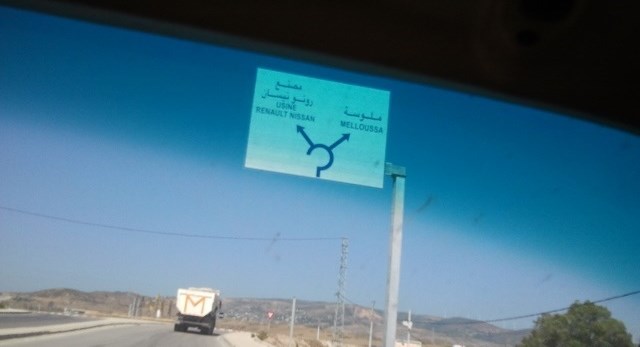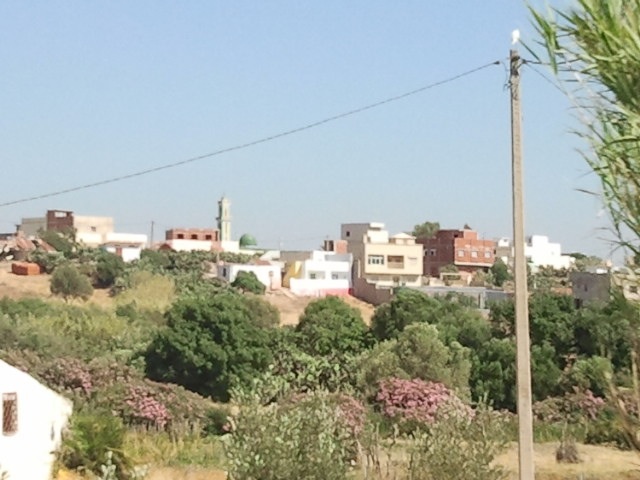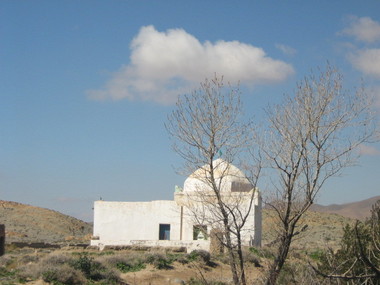Bio: Sh. Ahmad ibn Ajiba
Sayyidi Shaykh Ahmad ibn Ajiba al-Hasani
سيدي الشيخ أحمد ابن عجيبة الحسني
d. 1224 H. (1809 CE) East of Tetuan
﷽
He who dies without having entered into this knowledge of ours dies insisting upon his grave sins (kaba’ir) without realizing it. [Iqaz al-himam p. 8]
English
He is the noble scion and inheritor of tremendous feats. He is the axis of the circle of greatest sainthood, the springhead of secrets of the folk of ultimate reality, the shaykh of the two paths, and the supporting pillar of the two groups. He is the supreme saint and the illustrious succour, our liege and master Ahmad b. ‘Ajiba al-Hasani al-Idrisi al-Shadhili al-Fasi. [1]
He was one of the masters of stability, who in the beginning of his affair, received instruction in the sciences of sacred law. He would wear fine clothes and inclined towards the Sufi Path. He scooped the lights of the path and received the secrets of ultimate spiritual reality from his teacher, the unparalleled gem of the Sufis, Sayyidi Muhammad al-Buzaydi. He taught him the covenants, litanies and formulas of remembrance, and said to him, ‘O Ahmad, 0 my, son, the conditions of the spiritual path with us are truthfulness and love.’ Ibn `Ajiba relates that he said to him, ‘O my master, we would love you to write this down on a piece of paper.’ His teacher did this. `So when I was alone’, Ibn ‘Ajiba continues, ‘I looked at the piece of paper and read what was on it, whereupon a spiritual illumination descended upon me at once, and I became one of the folk of ultimate realities and stability.’
He — may Allah be pleased with him and may He please him — reached the station of gnostics by his truthfulness and love. When the doors of illumination were opened for him, he removed his fine clothes that he was previously accustomed to wear. The summoner of lovers called him out, saying, ‘What is this state, Ibn ‘Ajiba?’ Lights were thus poured over him, and he donned a tattered garment and a waistcloth, hanging a rosary [subha] and a scabbard around his neck, as was the custom of the spiritually elite. He began to roam about the markets with his scabbard hung on his neck, wearing his tatters and subha, while loudly crying, ‘Allah, Allah, what strangeness is this?’ If knowledge would have made him dispense with the spiritual state, Ibn ‘Ajiba would not have hung the scabbard.
His state remained unchanged until he attained what was decreed for him. He spoke about the secrets of the beneficiaries of spiritual perfection and bared unusual sciences and wonderful secrets. The people of the Maghrib concurred on the fact that he was one of Allah’s Friends, and sought his blessing by kissing his hand. Delegations paid him visits. His glance — may Allah sanctify his secret — was an elixir. If someone he knew came to him or met with him, he would raise him on to the arena of ‘the good actions of the active doers of good are the evildoings of those brought near to Allah’ [2],until he gained plentiful followers and disciples.
Whoever peruses his commentary on the Hikam (Iqaz al-Himam fi Sharh al-Hikam) will realize his worth and status with his Lord. He authored this commentary on al-Hikam al-Ata’iyya pursuant to an instruction by someone who could not be opposed in his request, namely, the unique exemplar of the Shadhili Order, his teacher who successfully convoyed him to the chain of lights, Sayyidi Muhammad al-Buzaydi. Sayyidi Ibn ‘Ajiba — may his secret be sanctified — said: ‘The bulk of this commentary which I have written down consists in nothing but divine gifts. I would, in fact, write down a given aphorism without knowing how to comment on it. I would then pause in need of Allah’s knowledge to inspire my pen.’
He penned several original works and commentaries. Among them is Qawa`id al-Tashawwuf fi Haqa’iq al-Tasawwuf. He also wrote an exegesis of the apparent and hidden meanings of the Qur’an (al-Bahr al-Madid fi Tafsir al-Qur’an al-Majid). He — may Allah sanctify his secret — said in its regard: ‘When I wanted to say something about its exegesis or something else, I would exposit some words and then become absent from my self. I would feel as if the words came forth from me involuntarily, as if they were a cloud. As a result, sciences and wisdoms issued forth from me. One day, an elderly man was in our company and heard that, so he remarked, “By Allah, I have attended the gatherings of both scholars and virtuous people, but by Allah, I have never witnessed the like of these jewels and pearls I see coming from Sayyidi Ahmad b. ‘Ajiba.” This was all due to the blessing of keeping the company of our spiritual guides. May Allah reward them splendidly on our behalf!’
In his commentary on the words of Allah, Mighty and Majestic is He, {Indeed, Allah and His angels bless the Prophet…} [Sura al-Ahzab: 56], he writes:
As for the prayer on him ﷺ taking the place of a spiritual guide and leading the disciple to the stations of annihilation [fana’] and subsistence [baqa’], until his reality and practice of the sacred law are congruent, this is not the case. This is because the frivolities of the ego, in fact, are not severed except by an exernal issuer of commands and prohibitions and by someone who has knowledge of the machinations and treachery of the ego. The extent of what be attained through prayers on Allah’s Messenger ﷺ, if one cannot get of a guide, is to become annihilated in the Attributes, and attain the station of supreme virtue. Extraordinary events and saintly miracles manifest at the hands of such a person, and he becomes a possessor of spiritual states. If, however, he does reach the station of annihilation, his devotion to the sacred law will be greater than his spiritual reality.
That is what we have experientially tasted and heard from our guides, and this is the path we have seen them resorting to and which we have taken from them. According to this way, they instruct the committed disciple whom they deem eligible for spiritual training to invoke the Supreme Name and become annihilated in it, until all his worlds vanish away. If his annihilation is actualized, and he becomes absent from his self and outward form, they return him to the station of subsistence, at which stage they instruct him to send prayers on the Prophet ﷺ so that his prayers on him ﷺ might be complete: praying upon his ﷺ spirit and secret without any veil, and beholding him at every moment, just as he beholds His Lord.
This is why the beginning of the Shadhili Path is the end of other spiritual paths, and its end is actualization of the truth; so understand.
His books — may Allah sanctify his secret and benefit us by him — outwardly exhibit the effusions of the perfected people of gnosis. He was in fact gifted the capacity to express the secrets of Allah’s people and reached the stations of the knowers of their Lord, until he was deemed to be the qutb of his age and the matchless star thereof.
His words — may Allah sanctify his secret — are of a sublime nature. He unravelled the obscure matters of the Sufis, exposited those aspects of their secrets which were hard to fathom, and uttered things which dazzled intellects.
He — may Allah sanctify his secret — died in the middle of the thirteenth century H. [3] His mausoleum in Morocco is well-known. People turn to Allah through him, seeking the fulfilment of their needs and relief from their griefs. May Allah nourish us by his spiritual sustentation, benefit us through him and make us follow in his footsteps, amin.
Footnotes:
[1] For his biography, see al-Yawaqith al-Thamina, according to which he died around AH 1266, whereas the correct date is Shawwal AH 1224. In Tabaqat al-Shadhiliyyat al-Kubra by Muhyi al-Din al-Tu`mi, he is named as Ahmad b. Muhammad b. al-Mahdi Ibn ‘Ajiba.
[2] Reported by ‘Ali al-Qari in al-Asrar al-Marfu’a, al-Shawkani in al-Fawa’id al-Majmu’a and al-Ajluni in Kashf al-Khafa’.
[3] In Tabaqat al-Shidhiliyyat al-Kubra by Muhyi al-Din al-Tu`mi (p. 41), it is said that he passed away among the Moroccan tribe of Banu Salman, in the house of his guide al-Buzidi, during the latter’s lifetime, in AH 1224, and was buried in Zammij among the Anjariyya tribe.
Source: Muhammad b. Qasim al-Kuhin, Tabaqat Al-Shadhiliyyah Al-Kubra, translated by Ahmad Ali al-Adani as “Biographies of Prominent Shadhilis”
عربي
(…- منتصف القرن 13)
الشريف الحسيب، قطب دائرة الولاية الكبرى، ومنبع أسرار أهل الحقيقة، شيخ الطريقتين، وعمدة الفريقين، ولي الله الأكبر، وغوثه الأشهر، سيدنا ومولانا أحمد ابن عجيبة الحسني الإدريسي الشاذلي الفاسي.
كان رضى الله عنه من أهل التمكين، تلقى في بدايته العلوم الشرعية.
وكان رضى الله عنه يلبس الملابس الحسنة، ومال إلى طريق التصوف، فأخذ أنوار الطريقة، وتلقى أسرار الحقيقة من أستاذه فرد هذه الطائفة سيدي محمد البوزيدي رضى الله عنه، ولقنه العهود، والأوراد، والذكر، وقال له: يا أحمد، يا ولدي، شروط الطريق عندنا الصدق والمحبة. وقال رضى الله عنه: فقلت له: يا سيدي، نحب أن تكتب لنا ذلك في كاغد. قال: فكتب لي بذلك، ولما خلوت بنفسي، نظرت إلى الكاغد([2])، وقرأتُ ما فيها، ففتح عليَّ في الحين، وصرت من أهل الحقائق والتمكين.
وبلغ رضي الله عنه وأرضاه مقامات العارفين بصدقه وحبه، فخلع ما كان عليه من الثياب، لما فتحت له الأبواب، وناداه منادي الأحباب: ما هذا الحال يا ابن عجيبة؟ فأفيضت عليه الأنوار، فارتدى مرقعة وإزارًا، وعلق سبحته وقرابه([3]) في عنقه كما هو شأن الأخيار، وصار يمر في الأسواق معلقًا قرابه في عنقه، لابسًا لمرقعته وسبحته، وهو يقول بأعلى صوته: الله الله، أش هادي الغريبة؟ لو كان العلم يغني عن الحال، ما يعلق القراب ابن عجيبة.
واستمر على هذا الحال حتى نال ما نال، وتكلم على أسرار أهل الكمال، فأبدى علومًا غريبة، وأسرارًا عجيبة، وأجمعت على ولايته أهل المغرب بأسرها، وتبركوا بتقبيل يديه، وأقبلت الوفود عليه، وكان قدس الله سره نظره إكسيرًا([4])، إذا أتاه أو التقى معه من يعرفه يرقيه في ميدان «حسنات الأبرار سيئات المقربين»، حتى كثرت على يديه الأتباع والمريدون.
ومن يطالع شرحه على «الحكم» يعرف قدره ومكانته عند ربه، وكان شرحه لهذه «الحكم العطائية» يأمر من لا تسعه مخالفته فرد الطائفة الشاذلية أستاذه وموصله بسلسلة الأنوار سيدي محمد البوزيدي، قال قُدَّس سره: وجلُّ هذا الشرح الذي نقيده إنما هو مواهب؛ لأني أكتب الحكمة ولا أدري ما أكتبُ، فأقف مفتقرًا إلى ما عند الله.
وله تآليف وشروح كثيرة، منها: كتاب «قواعد التشوف في حقائق التصوف»، وله تفسير للقرآن في الظاهر والباطن([5])، قال قدس الله سره: إذا أردت أن نتكلم في التفسير أو غيره نشرع في الكلام، ثم نغيب، فكنت نحس بالكلام يخرج مني من غير اختيار، كأنه السحاب، فتصدر مني علوم وحكم، ولقد حضر معنا ذات يوم رجل كبير السن، فسمع ذلك، فقال: والله، لقد حضرت مجالس العلماء والصالحين، واللهِ، ما رأيت مثل هذه الجواهر واليواقيت التي تخرج من سيدي أحمد ابن عجيبة، وذلك كله ببركة صحبة أشياخنا، فجزاهم الله عنا أحسن جزائه.
ومن تفسيره عند قوله عز وجل: ﴿إِنَّ اللهَ وَمَلَائِكَتَهُ يُصَلُّونَ…﴾ [الأحزاب: 56]: وأما كونها -أي الصلاة- تقوم مقام الشيخ في دخوله مقام الفناء والبقاء حتى تعتدل حقيقته وشريعته، فلا تنقطع رعونات([6]) النفس إلا بآمرٍ وناه من غيره، يكون عالمًا بدسائس النفوس وخدعها، وغاية ما توصل إليه الصلاة على رسول الله صلى الله عليه وسلم إن لم يظفر بالشيخ الفناء في الصفات، وينال مقام الصلاح الأكبر، وتظهر له كرامات وخوارق، ويكون من أرباب الأحوال، وإن وصل إلى مقام الفناء، تكون شريعته أكبر من حقيقته، هذا ما ذقناه وسمعناه من أشياخنا، والطريق التي أدركناهم يستعملونها، وأخذنا عنهم أنهم يأمرون المريد إن رأوه أهلًا للتربية أن يلتزم الاسم المفرد، ويفني فيه حتى تنعدم عوالمه، فإذا تحقق فناؤه، وغاب عن نفسه ورسمه، ردوه إلى مقام البقاء، وحينئذ يأمرونه بالصلاة على رسول الله صلى الله عليه وسلم؛ لتكون صلاته عليه كاملة، يصلي على روحه وسره بلا حجاب، ويشاهده في كل ساعة كما شاهد ربه.
أقول: ولهذا كانت الطريقة الشاذلية بدايتها نهاية غيرها، ونهايتها تحقيق فافهم.
وتآليفه قدس الله سره، ونفعنا به عليها لوائح نفثات أهل المعرفة الكمل، فإنه أُعطي رضى الله عنه ناطقة أسرار أهل الله، وأدرك مقامات العارفين بربهم، حتى عُدَّ قطب الزمان، وواحد الأوان.
وكلامه قدس الله سره عال، حل مشكلات القوم، وفك طلاسم أسرارهم، وتكلم بما أبهر عقول الأعيان.
توفي قدس الله سره في منتصف القرن الثالث عشر، ومقامه بالمغرب مشهور يتوسل به إلى الله في قضاء الحاجات، ودفع الكربات، أمدنا الله بمدده، ونفعنا به، وجعلنا على أثره. آمين.
([1]) أحمد بن محمد ابن عجيبة البغدادية. عجيبة بنت الحافظ محمد بن أبي غالب الباقداري، البغدادية: عالمة بالحديث من أهل بغداد. لها كتاب «مشيخة» في عشرة أجزاء. مفسر صوفي ولد سنة 1160 هـ وتوفي ببلدة أنجرة سنة 1224 هـ. [«الأعلام» (1/245)].
([2]) الكاغدُ: ورق الكتابة (ج) كواغد.
([3]) القِرَاَبُ: غمد السيف ونحوه.
([4]) الإكسير: مادة مركبة، كان الأقدمون يزعمون أنها تحول المعدن الرخيص إلى ذهب.
([5]) المسمى: «البحر المديد في تفسير القرآن المجيد» مطبوع.
([6]) الرعوناتُ: الحمق.
Maqam
 Location Imam Ibn ‘Ajiba is buried in one of his two zawiyyas, located between Tangier and Tetouan, located not far from the road between Tangier and Tetouan, on the way to a modern day town called Melousa, in a village called Az-Zameej.
Location Imam Ibn ‘Ajiba is buried in one of his two zawiyyas, located between Tangier and Tetouan, located not far from the road between Tangier and Tetouan, on the way to a modern day town called Melousa, in a village called Az-Zameej.
From malikiyya.se
Writings
Avaialble on archive.com
مكتبة ابن عجيبة الحسني
1- الفتوحات الإلهية في شرح المباحث الأصلية
2- الفهرسة
3- إيقاظ الهمم فى شرح الحكم
4- خلاصة شرح ابن عجيبة على متن الأجرومية في التصوف – عبد القادر الكوهيني
5- شرح صلاة القطب ابن مشيش و رسائل أخرى
6- معراج التشوف إلى حقائق التصوف و يليه كتاب كشف النقاب عن سر لب الألباب
7- الجواهير العجيبة من تآليف سيدي أحمد بن عجيبة – عبد السلام العمراني
8- تقييدان في وحدة الوجود
9- البحر المديد في تفسير القرآن المجيد: https://archive.org/details/ba7r-madid



